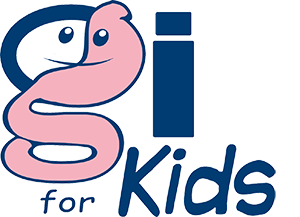Most infants are ready to start solids around 6 months of age. It is now recommended to wait until 6 months, whereas it was previously common to start purees at 4 months. There are no nutritional or developmental benefits that have been found with feeding solids earlier. In fact earlier introduction may be associated with increased risk of obesity.
Some behaviors that can indicate they are ready to start solids are:
- Holding head up and able to sit upright with minimal support*
- Picking up objects and bringing them to mouth
- Opening mouth when food is offered
- Swallowing food rather than it coming out onto their chin
The American Academy of Pediatrics says that you do not have to give foods in a certain order. It was previously recommended to start with only green/yellow vegetables and slowly increase vegetables, fruits, and then other foods. This is, in part, due to the thought that infants would develop a preference for sweet foods if offered first. This has been found to be untrue. Additionally, introducing a wide variety of foods and flavors early on is associated with decreased picky eating later in childhood.
Ideal first foods would be those that are high in nutrients such as iron, protein, calcium, zinc, and vitamins A, C, D, and fat. Iron is of upmost importance, especially for children who are breastfeeding because maternal iron stores start to wane around six months. In addition to introducing many flavors, including a variety of textures early on can safely be provided and may offer benefits such as decreasing sensory issues with foods, fostering feeding skills and further decreasing picky eating.
Baby led weaning is the practice of offering variety of foods and textures are offered not just purees with an emphasis on baby feeding themselves. With baby led weaning, the baby is in control over what and how much they eat. Research has shown babies started on finger foods are not more likely to choke on food than spoon fed babies. Self-feeding a variety of food consistencies and textures aids in the development of tongue movements, jaw strength, swallowing as well as fine motor skills.
Food categories to try include:
- Soft cooked vegetables like beans or lentils
- Cooked pastas
- Soft fruits
- Shredded protein (chicken, beef, pork)
- Anything that is soft enough to “mush” on the roof and an adults mouth could be given
Common Food Allergens:
- Cows milk
- Shellfish
- Fish
- Eggs
- Wheat
- Soy
- Tree nuts
- Peanuts
- Sesame
It is now recommended to introduce food allergens early and often. Unless they have had a previous reaction to a food (such as cow’s milk), there is no reason to withhold introduction of these foods. While you can introduce foods that are not common allergens together and frequently, it is recommended to introduce these foods one at a time several days apart.
Tips for Introducing Common Allergens:
- Start with small amount and if no reaction gradually increase.
- Add small pea sized amount peanut butter to child’s oatmeal if no reaction gradually increase to larger amounts over 3-5 day period. Avoid large globs of peanut butter. If no allergy to food start offering as frequently as you can, aim for at least weekly.
- Introduce earlier in the day.
- Most reactions happen within 2 hours after eating, plan to introduce allergen foods around when there would be at least 2 hours to observe your child after eating and be able to contact their provider if necessary.
- At your child’s six month well visit, ask your pediatrician what their recommendation would be to treat an allergic reaction at home with medication if one should occur.
Written by Lorena Gonzalez, Dietetic Intern






















